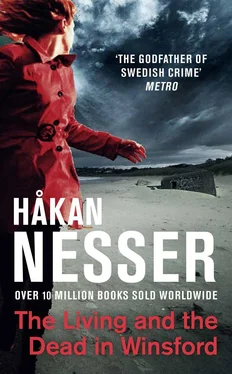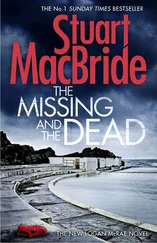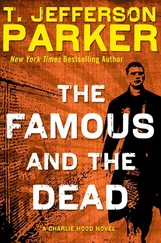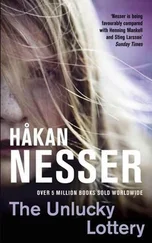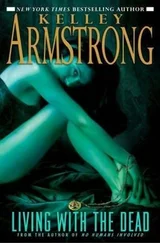Håkan Nesser - The Living and the Dead in Winsford
Здесь есть возможность читать онлайн «Håkan Nesser - The Living and the Dead in Winsford» весь текст электронной книги совершенно бесплатно (целиком полную версию без сокращений). В некоторых случаях можно слушать аудио, скачать через торрент в формате fb2 и присутствует краткое содержание. Год выпуска: 2013, Издательство: Mantle, Жанр: Криминальный детектив, на английском языке. Описание произведения, (предисловие) а так же отзывы посетителей доступны на портале библиотеки ЛибКат.
- Название:The Living and the Dead in Winsford
- Автор:
- Издательство:Mantle
- Жанр:
- Год:2013
- ISBN:нет данных
- Рейтинг книги:4 / 5. Голосов: 1
-
Избранное:Добавить в избранное
- Отзывы:
-
Ваша оценка:
- 80
- 1
- 2
- 3
- 4
- 5
The Living and the Dead in Winsford: краткое содержание, описание и аннотация
Предлагаем к чтению аннотацию, описание, краткое содержание или предисловие (зависит от того, что написал сам автор книги «The Living and the Dead in Winsford»). Если вы не нашли необходимую информацию о книге — напишите в комментариях, мы постараемся отыскать её.
The Living and the Dead in Winsford — читать онлайн бесплатно полную книгу (весь текст) целиком
Ниже представлен текст книги, разбитый по страницам. Система сохранения места последней прочитанной страницы, позволяет с удобством читать онлайн бесплатно книгу «The Living and the Dead in Winsford», без необходимости каждый раз заново искать на чём Вы остановились. Поставьте закладку, и сможете в любой момент перейти на страницу, на которой закончили чтение.
Интервал:
Закладка:
‘Our senses never betray us, it is in our heads that we get lost. Always in our heads.’
I read that line over and over again, trying to understand precisely what he means. But I don’t reach a conclusion, apart from the thought that it might well be a quotation, and possibly that it smells of Scottish distilleries.
The following day, the thirty-first of July, is dominated by a visit to Al-Hafez. The Belgian artist Pieter Baertens has delivered a large oil-painting they have commissioned and Martin describes in detail how the canvas is unrolled, spread out, gaped at, admired and commented on. It depicts Salome with John the Baptist’s head on a dish, and is at least six square metres in size. Baertens is accompanied by his wife, ‘or mistress or whatever she is’: she is Japanese and it is obvious that she posed as Salome. By all accounts Baertens is quite a famous and successful artist, and Grass states in an aside for Martin’s benefit that a commissioned painting like this would certainly cost around 100,000 dollars.
But then Herold has never had a reputation for being poor. Needless to say they indulge in an especially extravagant dinner during the course of the evening — the anonymous servants really deserve their wages, ‘whatever they may be’ — and no serious incidents occur. As midnight approaches they all go skinny-dipping in the swimming pool, apart from Megal whose excuse is that he’s too old, and Bessie who is reluctant to display her widely discussed stomach.
This would have been an appropriate point at which to reflect on swollen stomachs: back home in Stockholm there is one in Folkungagatan — much larger than Bessie Hyatt’s, if I’m not much mistaken — but it doesn’t occur to Martin to make any such comparisons.
Instead he states that he simply went to bed with a mysterious hypnotist and an extremely pleasant Japanese lady in his mind’s eye. In his mind’s eye, note. .
One day left. Only four pages, thank goodness.
*
The first of August begins with the sentence: ‘I ought not to write about this.’ As I understand it, he is sitting in his room and doing just that. In which case it is about five o’clock in the morning, and hence the second of August in fact, and he is sitting there because he is waiting for dawn to break.
This is because at first light he will embark on a short walk into the desert-like countryside that begins immediately outside the walls surrounding Al-Hafez. He will do so along with the other five actors of the male sex. I’m the one who uses the word ‘actors’, not Martin, because at this stage the thought that the whole procedure is pure theatre seems very obvious. I read twice over everything that Martin writes about the day and the evening, to make sure that I haven’t misunderstood anything.
In broad outline, this is what happens. The Belgian artist Baertens takes his Japanese Salome with him and leaves the stage at some point in the afternoon. Martin allows himself an hour’s siesta in his room, and soon afterwards the usual group is sitting round the table on the terrace. Martin states that Bessie Hyatt ‘is having one of her dark days’. He describes her appearance as that of ‘a wounded hind’ and ‘a bird that has flown too close to the sun and burnt itself’. (I decide not to write any more ‘sic!’s, and continue.) She also leaves the party after less than an hour — and does come back again a little later, but only to say goodnight, and wish the men good luck.
At this point Martin doesn’t yet know why she is wishing them good luck — but later he remembers this and realizes that she must have been involved, or at least known what was going to happen. When the meal can reasonably be considered over and done with, Tom Herold explains that he expects the men present — as a gesture of appreciation and thanks for the hospitality that has been lavished upon them — to take part in a scientific experiment. He goes into no detail about what the experiment involves, nor what its purpose is — that will become obvious later. He assumes they will all trust him and behave like upright and civilized gentlemen. When they have all said that they are willing to accept these conditions — only Gusov tries to wriggle out of it for some reason or other, but is soon talked round — Herold produces three hookahs which they divide among themselves, two by two. Martin is sitting next to Soblewski. It is not clear from Martin’s text what the ladies present get up to while these preparations are taking place.
And so they light up a mixture of tobacco and something else. Martin tries to describe what happens inside his head, but isn’t quite up to it. In any case, he must have fallen asleep after a while because he writes that he wakes up at about two o’clock, still on the terrace but now, like the others, lying on the ground. Lanterns are still burning here and there, but the three ladies are no longer present. Tom Herold and Grass are awake, the others are just regaining consciousness. When they are all back in the land of the living they are offered water to drink. Martin writes that he feels more thirsty than he has ever done in his life before. When they have all drunk their fill of water and returned to their places around the table, Herold produces six revolvers from a black box on the table in front of him. He asks how many of the gentlemen present are familiar with guns. It seems that everybody is apart from Grass — Martin assumes that the others, like himself, have undergone some sort of basic military training. Without actually firing a shot, Herold demonstrates how a revolver functions. Martin notes that all six seem to be identical and are evidently of the same make. When everybody says they understand how the pistols work, Herold loads them, with six bullets in each revolving chamber. ‘Some of these bullets are live, the rest are blanks,’ he explains. ‘It’s not easy to distinguish between them, as they all sound equally loud. Unless we look into the effect they have had, of course.’
Martin repeats that last sentence, and underlines it in his text. Unless we look into the effect they have had, of course .
When the explanation and demonstration are completed, Tom Herold wonders if anybody has any questions.
Nobody does.
That really is what he writes. Nobody has any questions, and Martin doesn’t even comment on that fact. I assume that the brains of both him and the others are overfull of what they smoked, and what sent them to sleep.
‘Okay,’ says Tom Herold. ‘We shall go out into the desert at dawn. You will be collected from your rooms at exactly six o’clock.’
And that is where the diary from Taza ends.
32
Perhaps there are authors who would be pleased to write a conclusion like that to a play, but I find it difficult to imagine that an audience would applaud.
I check to make sure that no pages have been torn out. It’s easily done, and incidentally Martin’s text ends halfway down one page.
Then I take out the typewritten pages. Sit and read through them for half an hour. It becomes clear that about three-quarters is typed-up material from the diary. There is nothing about Morocco, only Greece. Plus a few short free-standing texts: nature descriptions from Samos, a short essay on Cavafy and Odysseas Elytis, and something that looks like the beginning of a short story. Five pages of short poems, some of them in haiku form.
That’s all. Nowhere is there any continuation from Al-Hafez in Taza. Not a single page, not a single line about that. There is good reason to assume that all the typewritten pages were composed before the summer of 1980.
I put the pages away and check the clock. It is a few minutes past eleven. I let Castor out to do his business, and think: Should I start examining the computer material now, or wait until tomorrow?
Читать дальшеИнтервал:
Закладка:
Похожие книги на «The Living and the Dead in Winsford»
Представляем Вашему вниманию похожие книги на «The Living and the Dead in Winsford» списком для выбора. Мы отобрали схожую по названию и смыслу литературу в надежде предоставить читателям больше вариантов отыскать новые, интересные, ещё непрочитанные произведения.
Обсуждение, отзывы о книге «The Living and the Dead in Winsford» и просто собственные мнения читателей. Оставьте ваши комментарии, напишите, что Вы думаете о произведении, его смысле или главных героях. Укажите что конкретно понравилось, а что нет, и почему Вы так считаете.
